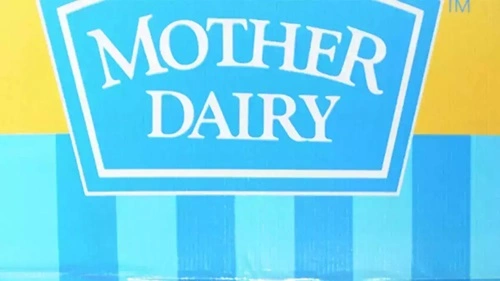Mother Dairy, established in 1974 as a subsidiary of the National Dairy Development Board (NDDB), has been a cornerstone in India’s dairy industry. Over the years, it has diversified its product range to include dairy products, fruits and vegetables under the ‘Safal’ brand, and edible oils under the ‘Dhara’ brand. As we assess the company’s position in 2025, a SWOT analysis provides a comprehensive overview of its current standing and future prospects.
Strengths
1. Strong Brand Equity: Mother Dairy has built a robust brand reputation over decades, symbolizing quality and trust among Indian consumers. Its commitment to delivering fresh and hygienic products has solidified its market position.
2. Diverse Product Portfolio: The company offers a wide array of products, including milk, yogurt, ice creams, paneer, fruits, vegetables, and edible oils. This diversification caters to varied consumer needs and reduces dependency on a single product line.
3. Extensive Distribution Network: With a vast network of milk booths, retail outlets, and distribution channels, Mother Dairy ensures product availability across urban and rural areas, enhancing its market reach.
4. Farmer-Centric Approach: Mother Dairy’s strong relationships with farmers ensure a steady and reliable supply of raw materials. This farmer support system not only benefits the company but also contributes to the agricultural economy.
5. Technological Integration: The adoption of advanced processing and supply chain technologies has improved operational efficiency, product quality, and customer satisfaction.

Weaknesses
1. Limited International Presence: Despite its strong domestic foothold, Mother Dairy has a minimal presence in international markets, limiting its global brand recognition and revenue potential.
2. Perishability of Products: The inherent perishability of dairy and fresh produce necessitates efficient cold chain logistics. Any lapses can lead to significant losses and impact product quality.
3. Pricing Constraints: Maintaining competitive pricing while ensuring quality can be challenging, especially with fluctuating input costs. This may affect profit margins and market competitiveness.
4. Regulatory Compliance: Navigating the complex regulatory landscape in the food industry requires continuous monitoring and adaptation, which can strain resources.
5. Dependency on Domestic Market: A significant reliance on the Indian market makes the company vulnerable to regional economic fluctuations and market dynamics.
Opportunities
1. Expansion into Emerging Markets: Tapping into international markets, especially in neighboring countries, can open new revenue streams and enhance brand recognition.
2. Product Line Diversification: Introducing health-focused products, such as lactose-free milk, plant-based alternatives, and fortified foods, can cater to evolving consumer preferences and capture new market segments.
3. E-commerce Integration: Leveraging online platforms for direct-to-consumer sales can expand reach, especially among tech-savvy consumers, and provide valuable consumer insights.
4. Sustainability Initiatives: Implementing eco-friendly practices, such as sustainable sourcing and recyclable packaging, can enhance brand image and appeal to environmentally conscious consumers.
5. Strategic Partnerships: Collaborations with international brands or local startups can bring in innovation, new technologies, and access to different consumer bases.
Threats
1. Intense Competition: The dairy industry faces stiff competition from both organized players and local dairy cooperatives, which can impact market share and pricing strategies.
2. Supply Chain Disruptions: Factors such as transportation strikes, natural disasters, or pandemics can disrupt the supply chain, affecting product availability and sales.
3. Health and Safety Concerns: Any incidents related to product contamination or quality issues can severely damage brand reputation and consumer trust.
4. Regulatory Changes: New food safety regulations or changes in government policies can necessitate operational adjustments, leading to increased costs and resource allocation.
5. Fluctuating Input Costs: Variations in the prices of raw materials, such as milk procurement rates and feed costs, can affect profitability and necessitate price adjustments.
Recent Developments
- Investment in Infrastructure: Mother Dairy has announced plans to invest ₹750 crore to set up two new processing plants for dairy and fruits & vegetables. This expansion aims to meet rising consumer demand and enhance processing capacities
- Product Portfolio Expansion: The company has introduced new products, including a buffalo milk variant in Delhi-NCR, priced at ₹70 per liter, to cater to diverse consumer preferences.
- Revenue Growth: Mother Dairy reported a 17% increase in turnover, reaching ₹14,500 crore in FY23, reflecting strong consumer demand and effective business strategies.
- Price Adjustments: In response to rising input costs, Mother Dairy has implemented multiple price hikes for its milk products in Delhi-NCR, with full-cream milk now priced at ₹68 per liter.
Conclusion
Mother Dairy stands as a formidable entity in India’s dairy sector, backed by a strong brand legacy, diverse product offerings, and a commitment to quality. While it faces challenges such as intense competition and supply chain complexities, the company’s strategic investments and adaptability position it well for sustained growth. By capitalizing on emerging opportunities and addressing inherent weaknesses, Mother Dairy can continue to strengthen its market presence and contribute significantly to India’s dairy industry in the years to come.














